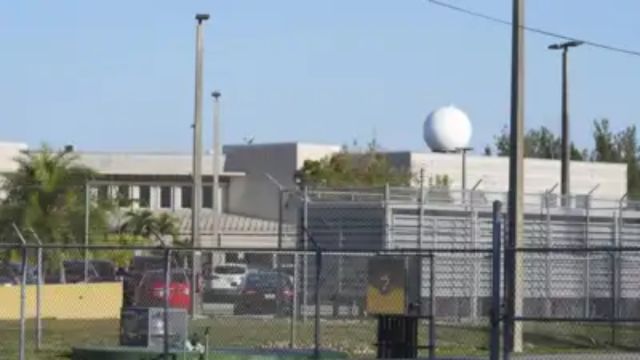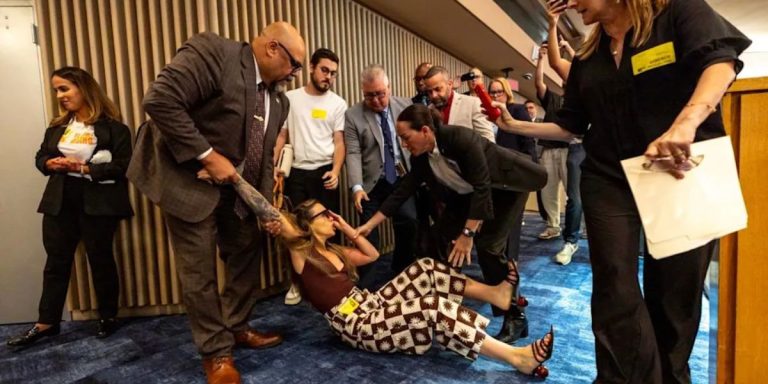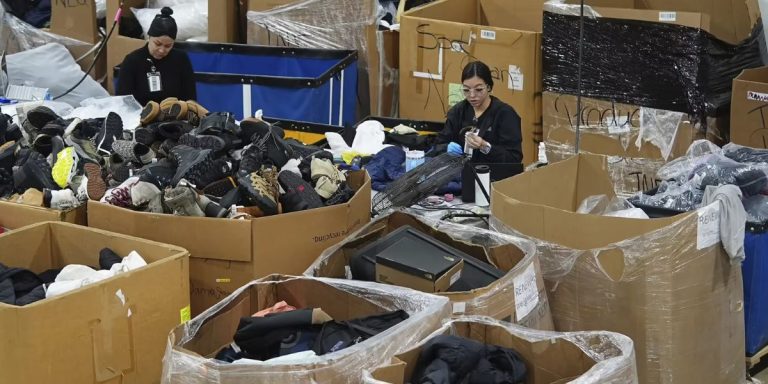MIAMI — As hundreds of migrants rushed into the Krome Detention Center in Miami on the edge of the Florida Everglades, a tangible fear of an uprising developed prevalent among its staff.
As President Donald J. Trump attempted to fulfil his campaign promise of mass arrests and removals of migrants, Krome, the United States’ oldest immigration detention facility with a long history of abuse, saw its prisoner population recently increase to nearly three times its capacity of 600.
“There are 1700 people here at Krome!!!!,” one US Immigration and Customs Enforcement employee emailed a coworker last month, adding that despite feeling dangerous walking around the facility, no one was ready to speak up.
That tension, which stems from fear of retaliation for attempting to assure more humane conditions, comes amid a struggle in federal courts and the corridors of Congress over whether the president’s immigration enforcement has gone too far, too quickly, at the price of basic rights.
Reports have come in from Krome regarding a shortage of water and food, unclean conditions, and medical mistreatment. With the spike of complaints, the Trump administration closed three Department of Homeland Security oversight offices tasked with reviewing such claims.
A government employee provided a copy of the text exchange and numerous other papers with The Associated Press under the condition of anonymity due to fear of reprisal. Other documents contain detainee complaints and a description of 40 women arriving at Krome, an all-male facility, which may have violated a federal law designed to decrease the risk of prison rape.
There is a critical bed shortage in detention facilities.
Krome is far from alone in facing a fundamental difficulty shared by many other facilities: a lack of bed space. Nationwide, detentions have risen to roughly 48,000 as of March 23, a 21% increase from the already high numbers at the end of the Biden administration. In recent weeks, they have mostly stagnated as efforts to deport many of the same individuals have been stymied by a number of legal challenges.
To solve the shortage, ICE issued a request for bids this month to manage detention centres for up to $45 billion, with the goal of expanding to 100,000 beds from the existing budget of approximately 41,000. As part of the expansion, the federal government intends to keep migrants on US Army facilities for the first time, putting a century-old restriction on military engagement in civilian law enforcement to the test.
By some measures, Trump’s unorthodox strategy is effective. According to US Customs and Border Protection, fewer than 11,000 migrants were intercepted at the US-Mexico border in March, the lowest level in at least a decade and down from 96,035 in December 2024.
Other facilities limit the number of detainees.
Krome is one of five prisons that ICE directly operates (the others are in Buffalo, Arizona, and two in Texas), and it can house detainees for more than 16 hours. After Trump took office, ICE had orders to round up migrants with few options on where to send them. The great majority of bed space is rented from local prisons, jails, or privately owned facilities, which have stringent contractual constraints on the number of inmates they can accept.
As its concrete cellblocks began filling up, federal staffers started documenting the worsening circumstances in weekly reports for the Department of Homeland Security’s leadership. They made their way up the chain through the Department of Homeland Security’s Office of Immigration and Detention Ombudsman, an independent monitor created by Congress during the first Trump administration to mitigate the impact from a series of detention facility scandals.
The office passed through four ombudsmen in two months as Trump officials increased arrests without a clear plan for where to send them. The situation deteriorated in mid-March, when the office’s 100 employees, including a case manager at Krome, were placed on administrative leave in what officials described as an effort to remove barriers to enforcement.
“Rather than supporting law enforcement efforts, they frequently function as internal adversaries, slowing down operations,” DHS spokeswoman Tricia McLaughlin said.
Around the same time, Krome’s disarray became public knowledge. Images discreetly captured on a mobile and released on TikTok showed a group of men sleeping on concrete floors and under tables, using their shoes as cushions.
“We are practically kidnapped,” Osiris Vázquez, his eyes bloodshot from lack of sleep, stated in the shaky video, which has received 4.4 million views. “We do not want likes. We want assistance. Please!”
Vázquez, who was caught while driving home from a construction job in Miami, claimed to have shared a small room with about 80 other men for two weeks. Showers and phone calls were prohibited, and the fetid-smelling restrooms were left unattended. Food was limited to peanut butter sandwiches.
“There was no clock, no window, and no natural light,” Vázquez said in an interview. “You lost all notion of time, whether it’s day or night.”












